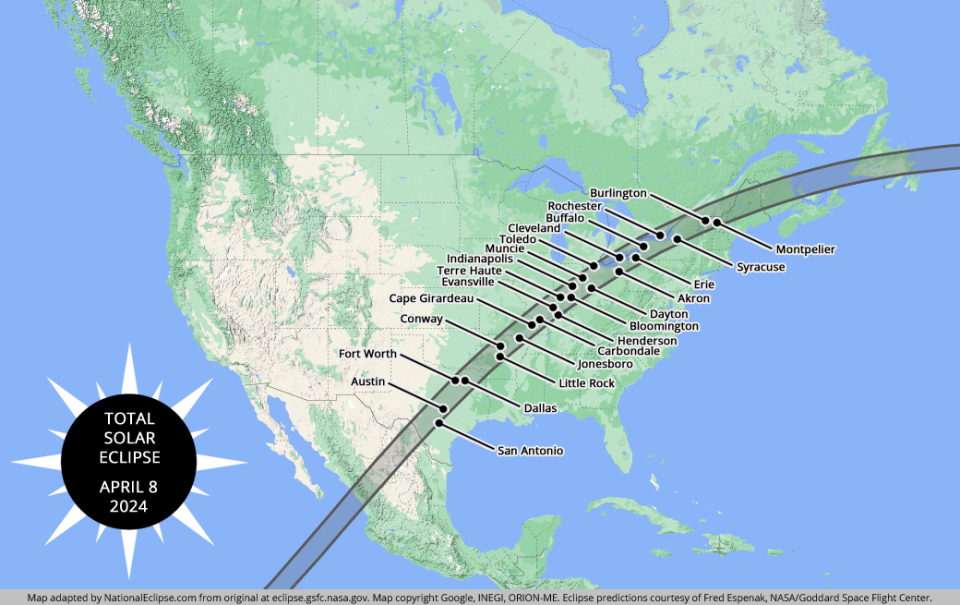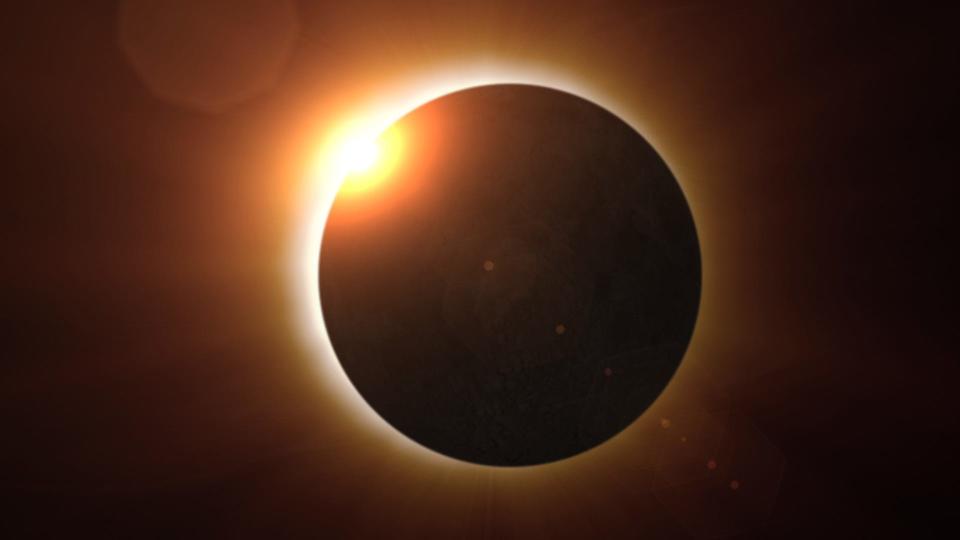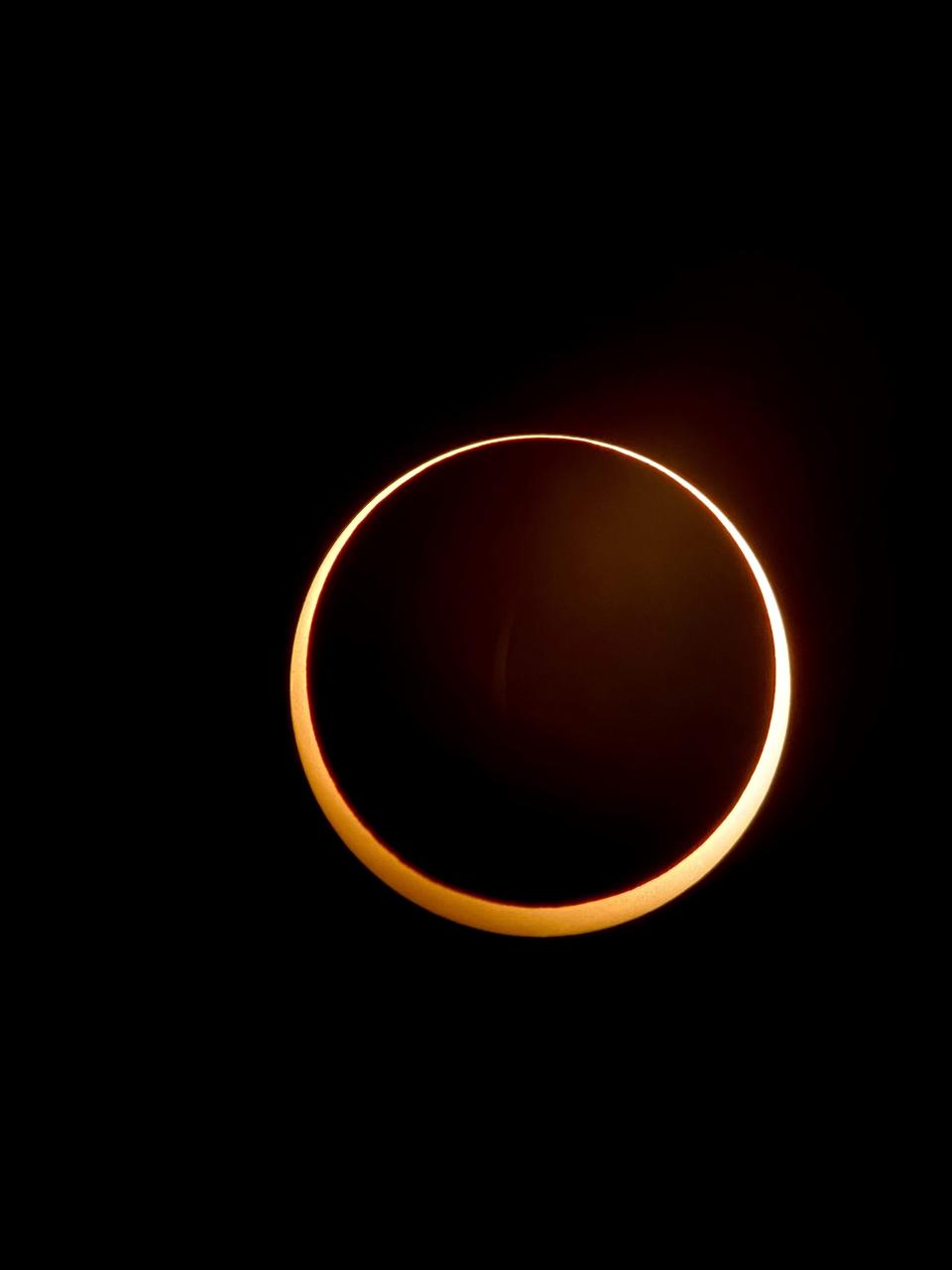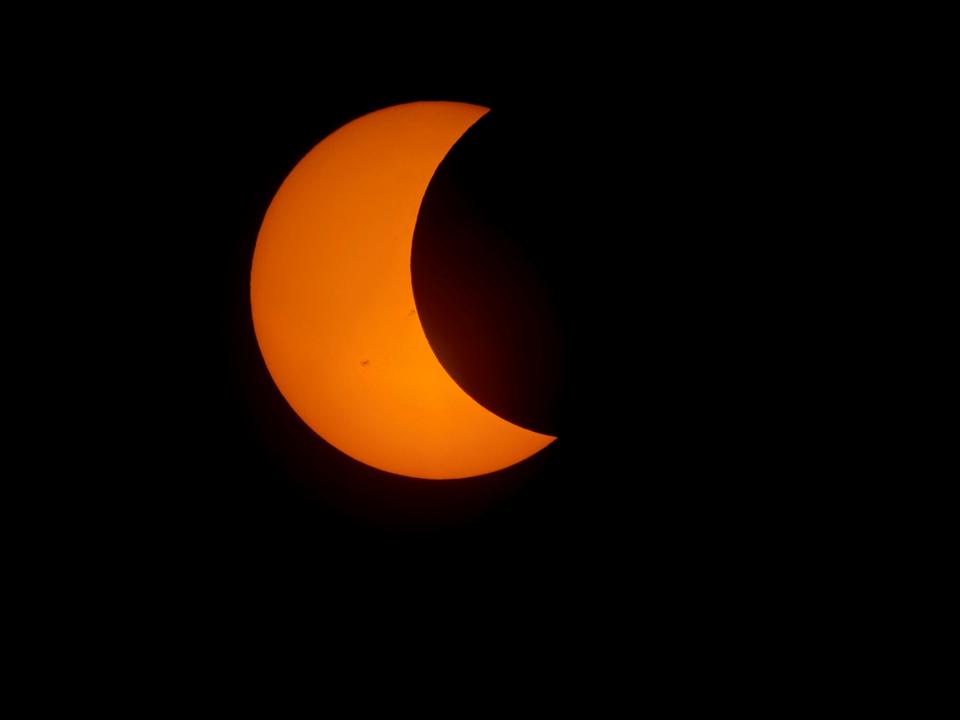Cincinnati's next total solar eclipse. Start planning for 3046
On April 8, the moon will slide between Earth and the sun to make a solar eclipse. And for many people at the right place and time in Mexico, the United States and Canada, they will experience the greatest show in the universe, a total solar eclipse.
The moon’s shadow will sweep across the United States at around 2,000 miles per hour. It will travel from Dallas to Cleveland in 33 minutes.
This alignment between the sun, moon and Earth is so rare that, on average, any one spot in the northern hemisphere experiences a total solar eclipse every 330 years. But for places like Cincinnati, which has not had a total solar eclipse since 1395, this is a once in a millennium astronomical event. Especially when you consider that Cincinnati proper still won't see full totality until the year 3046.
So continue reading to figure out where to go (and when) to experience this rare totality.
Cincinnati partial solar eclipse timeline
In the city of Cincinnati and Northern Kentucky, there will not be a total solar eclipse. Many places in the area will experience 98-99% of the sun blocked by the moon. Although the sky will likely darken and the temperature will drop a little, people outside the path of totality will not experience the full dazzling effects of the total solar eclipse.
Partial eclipse begins: 1:52 p.m.
Maximum eclipse: 3:09-3:10 p.m.
Partial eclipse ends: 4:24 p.m.
Find eclipse totality near you

The narrow path of totality looks like a ribbon arcing through Texas, Arkansas, Missouri, Illinois, Indiana, Ohio, Pennsylvania, New York, Vermont and Maine. The closer you are to the path of totality, the greater your partial eclipse will be. But getting into totality should be your ultimate goal.
With many schools and businesses in Cincinnati closed for the eclipse, here are nearby locations to view various amounts of totality.
Downtown Cincinnati: 0:00 (no totality at all).
Jungle Jim's, Fairfield: 35 seconds.
Harrison, Ohio: 1 minute, 30 seconds.
Hamilton, Ohio: 1 minute, 41 seconds.
Middletown, Ohio: 1 minute, 57 seconds.
Dayton, Ohio: 2 minutes, 42 seconds.
Oxford, Ohio: 2 minutes, 50 seconds.
Batesville, Indiana: 2 minutes, 59 seconds.
Richmond, Indiana: 3 minutes, 49 seconds.
Wapakoneta, Ohio: 3 minutes, 57 seconds.
Here's what the total solar eclipse will look like
The solar eclipse begins when the leading edge of the moon appears in silhouette in front of the sun. For most locations in the United States, the moon will first cover the bottom right section of the sun and appear to slowly move up and to the left. This is called the partial solar eclipse stage. The moon will continue to cover more of the sun over the next hour, slowly building toward the total eclipse.
During the partial eclipse stages, if even a slim crescent of sunlight is shining, you need to use certified safe solar viewing methods like eclipse glasses. Even 1% of the sun shining around the moon could still cause eye damage.

Just before totality, the last rays of sunlight trickle around the mountains of the moon. The dazzling effect is called the diamond ring because you can see the outline of the moon in front of a ghostly white light.
Solar activity has ramped up lately and you may be able to see solar prominences. These extreme eruptions on the sun, if large enough, may be visible as tiny pink protuberances peaking around the edge of the moon.
Then, at totality, the wispy, ethereal tendrils of the corona of the sun extend in various directions. While the moon is completely covering the sun, that is the only time when the sky is dark enough for you to see this outer atmosphere of the sun.
For people with specially filtered binoculars or telescopes, you can zoom in seconds before or after totality to witness Bailey's Beads: the beads of sunlight coming through the valleys and around the mountains of the moon.
Annular vs. total solar eclipses

For totality to take place, everything must be lined up perfectly. The moon, at around 240,000 miles from Earth, must move directly in front of the sun, which is 93,000,000 miles away. But the moon varies its distance from us. When it is farther from Earth, it does not appear large enough in the sky to block out the entire sun. This is called an annular solar eclipse or ring of fire eclipse since the moon appears to be nestled completely inside the disc of the sun with a ring of bright sunlight surrounding it. This last happened on Oct. 14, 2023.
In order to create a total solar eclipse, the moon must be close enough to the Earth to block out the entire sun. And even under the most perfect alignment, the moon’s shadow barely reaches the Earth’s surface to be visible along a swath of the planet 80-120 miles wide. This is called the path of totality. The maximum amount of time that the moon can totally eclipse the sun is 7 1/2 minutes, while the eclipse on April 8 will last one second at the edge of the shadow to a maximum of 4 minutes, 28 seconds in Mexico.

Don’t miss it: Next total solar eclipses by state
Ohio: Sept. 14, 2099.
Kentucky: Oct. 17, 2153.
Indiana: Sept. 14, 2099.
Texas: May 11, 2078.
Arkansas: Aug. 12, 2045.
Missouri: Aug. 12, 2045.
Illinois: Sept. 14, 2099.
Pennsylvania: May 1, 2079.
New York: May 1, 2079.
Vermont: May 1, 2079.
New Hampshire: May 1, 2079.
Maine: May 1, 2079.
Dean Regas is an astronomer, host of the Looking Up podcast, and author of six books including "100 Things to See in the Night Sky." He can be reached at astrodean.com
Eclipse Chasing: Online Astronomy Class
What: The total solar eclipse is coming Monday, April 8, and you do not want to miss it! Astronomy expert and eclipse chaser, Dean Regas, shares his tips on where to go, what to look for, and how to view it safely. Plus, he will give you tools to watch the weather forecast to make sure you go to a place with clear skies.
When: Recorded April 4, your ticket allows you to watch the class at your convenience.
Tickets: $10 per household.
Register: astrodean.com/shop.
This article originally appeared on Cincinnati Enquirer: Cincinnati's last total solar eclipse was in 1395. The next one? 3046

